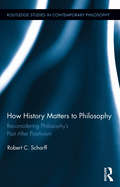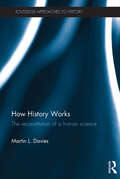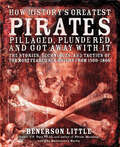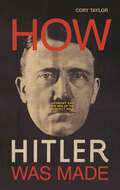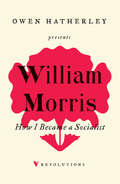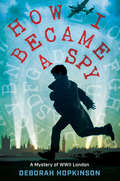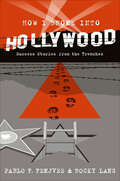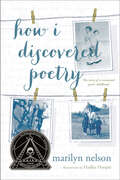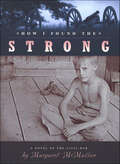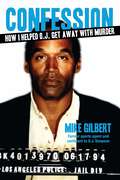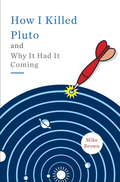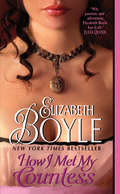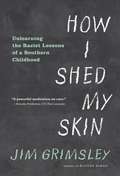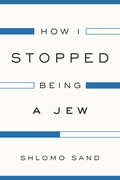- Table View
- List View
How Hip Hop Became Hit Pop: Radio, Rap, and Race
by Amy CoddingtonA free ebook version of this title is available through Luminos, University of California Press's Open Access publishing program. Visit www.luminosoa.org to learn more.How Hip Hop Became Hit Pop examines the programming practices at commercial radio stations in the 1980s and early 1990s to uncover how the radio industry facilitated hip hop's introduction into the musical mainstream. Constructed primarily by the Top 40 radio format, the musical mainstream featured mostly white artists for mostly white audiences. With the introduction of hip hop to these programs, the radio industry was fundamentally altered, as stations struggled to incorporate the genre's diverse audience. At the same time, as artists negotiated expanding audiences and industry pressure to make songs fit within the confines of radio formats, the sound of hip hop changed. Drawing from archival research, Amy Coddington shows how the racial structuring of the radio industry influenced the way hip hop was sold to the American public, and how the genre's growing popularity transformed ideas about who constitutes the mainstream.
How History Gets Things Wrong: The Neuroscience of Our Addiction to Stories (The\mit Press Ser.)
by Alex RosenbergWhy we learn the wrong things from narrative history, and how our love for stories is hard-wired.To understand something, you need to know its history. Right? Wrong, says Alex Rosenberg in How History Gets Things Wrong. Feeling especially well-informed after reading a book of popular history on the best-seller list? Don't. Narrative history is always, always wrong. It's not just incomplete or inaccurate but deeply wrong, as wrong as Ptolemaic astronomy. We no longer believe that the earth is the center of the universe. Why do we still believe in historical narrative? Our attachment to history as a vehicle for understanding has a long Darwinian pedigree and a genetic basis. Our love of stories is hard-wired. Neuroscience reveals that human evolution shaped a tool useful for survival into a defective theory of human nature. Stories historians tell, Rosenberg continues, are not only wrong but harmful. Israel and Palestine, for example, have dueling narratives of dispossession that prevent one side from compromising with the other. Henry Kissinger applied lessons drawn from the Congress of Vienna to American foreign policy with disastrous results. Human evolution improved primate mind reading—the ability to anticipate the behavior of others, whether predators, prey, or cooperators—to get us to the top of the African food chain. Now, however, this hard-wired capacity makes us think we can understand history—what the Kaiser was thinking in 1914, why Hitler declared war on the United States—by uncovering the narratives of what happened and why. In fact, Rosenberg argues, we will only understand history if we don't make it into a story.
How History Matters to Philosophy: Reconsidering Philosophy’s Past After Positivism (Routledge Studies in Contemporary Philosophy)
by Robert C. ScharffIn recent decades, widespread rejection of positivism’s notorious hostility toward the philosophical tradition has led to renewed debate about the real relationship of philosophy to its history. How History Matters to Philosophy takes a fresh look at this debate. Current discussion usually starts with the question of whether philosophy’s past should matter, but Scharff argues that the very existence of the debate itself demonstrates that it already does matter. After an introductory review of the recent literature, he develops his case in two parts. In Part One, he shows how history actually matters for even Plato’s Socrates, Descartes, and Comte, in spite of their apparent promotion of conspicuously ahistorical Platonic, Cartesian, and Positivistic ideals. In Part Two, Scharff argues that the real issue is not whether history matters; rather it is that we already have a history, a very distinctive and unavoidable inheritance, which paradoxically teaches us that history’s mattering is merely optional. Through interpretations of Dilthey, Nietzsche, and Heidegger, he describes what thinking in a historically determinate way actually involves, and he considers how to avoid the denial of this condition that our own philosophical inheritance still seems to expect of us. In a brief conclusion, Scharff explains how this book should be read as part of his own effort to acknowledge this condition rather than deny it.
How History Works: The Reconstitution of a Human Science (Routledge Approaches to History)
by Martin L. DaviesHow History Works assesses the social function of academic knowledge in the humanities, exemplified by history, and offers a critique of the validity of historical knowledge. The book focusses on history’s academic, disciplinary ethos to offer a reconception of the discipline of history, arguing that it is an existential liability: if critical analysis reveals the sense that history offers to the world to be illusory, what stops historical scholarship from becoming a disguise for pessimism or nihilism? History is routinely invoked in all kinds of cultural, political, economic, psychological situations to provide a reliable account or justification of what is happening. Moreover, it addresses a world already receptive to comprehensive historical explanations: since everyone has some knowledge of history, everyone can be manipulated by it. This book analyses the relationship between specialized knowledge and everyday experience, taking phenomenology (Husserl) and pragmatism (James) as methodological guides. It is informed by a wide literature sceptical of the sense academic historical expertise produces and of the work history does, represented by thinkers such as Schopenhauer, Nietzsche, Valéry, Anders and Cioran. How History Works discusses how history makes sense of the world even if what happens is senseless, arguing that behind the smoke-screen of historical scholarship looms a chaotic world-dynamic indifferent to human existence. It is valuable reading for anyone interested in historiography and historical theory.
How History's Greatest Pirates Pillaged, Plundered, and Got Away With It: The Stories, Techniques, and Tactics of the Most Feared Sea Rovers from 1500–1800
by Benerson LittleWho were the world’s most successful pirates, and why? “Interesting and very readable . . . Little clearly knows his subject well.” —International Journal of Naval HistoryMore than just simple retellings of tried-and-true stories of buccaneers on the high seas, this book focuses on pirating tactics of the 1500s through the 1800s to give an in-depth view of how pirates functioned through history. Stories of the thirteen most famous pirates as they raid major ships and pillage coastal villages reveal how the pirates approached such invasions—and how they managed to elude authorities and sometimes whole navies. In addition, vivid firsthand descriptions recreate the excitement, fear, and fury of the most famous raids by these outlaws of the ocean. Delving deep to show piracy’s profound impact on trade, politics, military strategy, culture, and individual lives, the book sifts truth from myth, carefully reconstructs the geopolitical context of each story, and analyzes the tactics that brought the pirates glory, or led to their downfall. Also included are archival images gathered from around the world by the author, a former Navy SEAL and consultant on maritime security.
How Hitler Could Have Won World War II: The Fatal Errors That Led to Nazi Defeat
by Bevin AlexanderMost of us rally around the glory of the Allies' victory over the Nazis in World War II. The story is often told of how the good fight was won by an astonishing array of manpower and stunning tactics. However, what is often overlooked is how the intersection between Adolf Hitler's influential personality and his military strategy was critical in causing Germany to lose the war. With an acute eye for detail and his use of clear prose, acclaimed military historian Bevin Alexander goes beyond counterfactual "What if?" history and explores for the first time just how close the Allies were to losing the war. Using beautifully detailed, newly designed maps, How Hitler Could Have Won World War II exquisitely illustrates the important battles and how certain key movements and mistakes by Germany were crucial in determining the war's outcome. Alexander's harrowing study shows how only minor tactical changes in Hitler's military approach could have changed the world we live in today. How Hitler Could Have Won World War II untangles some of the war's most confounding strategic questions, such as: Why didn't the Nazis concentrate their enormous military power on the only three beaches upon which the Allies could launch their attack into Europe? Why did the terrifying German panzers, on the brink of driving the British army into the sea in May 1940, halt their advance and allow the British to regroup and evacuate at Dunkirk?With the chance to cut off the Soviet lifeline of oil, and therefore any hope of Allied victory from the east, why did Hitler insist on dividing and weakening his army, which ultimately led to the horrible battle of Stalingrad?Ultimately, Alexander probes deeply into the crucial intersection between Hitler's psyche and military strategy and how his paranoia fatally overwhelmed his acute political shrewdness to answer the most terrifying question: Just how close were the Nazis to victory? Why did Hitler insist on terror bombing London in the late summer of 1940, when the German air force was on the verge of destroying all of the RAF sector stations, England's last defense?With the opportunity to drive the British out of Egypt and the Suez Canal and occupy all of the Middle East, therefore opening a Nazi door to the vast oil resources of the region, why did Hitler fail to move in just a few panzer divisions to handle such an easy but crucial maneuver?On the verge of a last monumental effort and concentration of German power to seize Moscow and end Stalin's grip over the Eastern front, why did the Nazis divert their strength to bring about the far less important surrender of Kiev, thereby destroying any chance of ever conquering the Soviets? "Bevin Alexander, an experienced military historian who writes with clarity and alarm, here presents a new and insightful interpretation of Hitler's lost opportunities to win World War II. In the process Alexander gives us a concise history of the war in Europe. "-- Martin Blumenson, author of The Patton Papers and Patton: The Man Behind the Legend"In his latest book, How Hitler Could Have Won World War II, author Bevin Alexander has synthesized and analyzed the military campaigns by Germany under Hitler's control in such a readable fashion as to intrigue both armchair generals as well as serious students of military strategy and tactics. It should be a required text for study at all military schools and war colleges. "-- Thomas H. Moorer, Admiral, U. S. Navy (Ret. ), former chairman, U. S. Joint chiefs of Staff"Speculation is the handmaiden of a historian's search for a story of the past. . . . Bevin Alexander has compiled his 'What if?'s' into a fascinating, plausible and, in retrospect, alarming scenario of what might have been if only Hitler had been a bit more rational, a bit better at grand strategy. "-- F. J. Kroesen, former commander-in-chief, U. S. Army-Europe, and commander, NATO Central Army Group
How Hitler Was Made: Germany and the Rise of the Perfect Nazi
by Cory TaylorFocusing on German society immediately following the First World War, this vivid historical narrative explains how fake news and political uproar influenced Hitler and put him on the path toward dictatorial power. How did an obscure agitator on the political fringes of early-20th-century Germany rise to become the supreme leader of the "Third Reich"? Unlike many other books that track Adolf Hitler's career after 1933, this book focuses on his formative period--immediately following World War I (1918-1924). The author, a veteran producer of historical documentaries, brings to life this era of political unrest and violent conflict, when forces on both the left and right were engaged in a desperate power struggle. Among the competing groups was a highly sophisticated network of ethnic chauvinists that discovered Hitler and groomed him into the leader he became. The book also underscores the importance of a post-war socialist revolution in Bavaria, led by earnest reformers, some of whom were Jewish. Right wing extremists skewed this brief experiment in democracy followed by Soviet-style communism as evidence of a Jewish-Bolshevik plot. Along with the pernicious "stab-in-the-back" myth, which misdirected blame for Germany's defeat onto civilian politicians, public opinion was primed for Hitler to use his political cunning and oratorical powers to effectively blame Jews and Communists for all of Germany's problems. Based on archival research in Germany, England, and the US, this striking narrative reveals how the manipulation of facts and the use of propaganda helped an obscure, embittered malcontent to gain political legitimacy, which led to dictatorial power over a nation.
How Human Rights Can Build Haiti: Activists, Lawyers, and the Grassroots Campaign
by Fran QuigleyA cataclysmic earthquake, revolution, corruption, and neglect have all conspired to strangle the growth of a legitimate legal system in Haiti. But as How Human Rights Can Build Haiti demonstrates, the story of lawyers-activists on the ground should give us all hope. They organize demonstrations at the street level, argue court cases at the international level, and conduct social media and lobbying campaigns across the globe. They are making historic claims and achieving real success as they tackle Haiti's cholera epidemic, post-earthquake housing and rape crises, and the Jean-Claude Duvalier prosecution, among other human rights emergencies in Haiti. The only way to transform Haiti's dismal human rights legacy is through a bottom-up social movement, supported by local and international challenges to the status quo. That recipe for reform mirrors the strategy followed by Mario Joseph, Brian Concannon, and their clients and colleagues profiled in this book. Together, Joseph, Concannon, and their allies represent Haiti's best hope to escape the cycle of disaster, corruption, and violence that has characterized the country's two-hundred-year history. At the same time, their efforts are creating a template for a new and more effective human rights-focused strategy to turn around failed states and end global poverty.
How Human Rights Can Build Haiti: Activists, Lawyers, and the Grassroots Campaign
by Fran QuigleyA cataclysmic earthquake, revolution, corruption, and neglect have all conspired to strangle the growth of a legitimate legal system in Haiti. But as How Human Rights Can Build Haiti demonstrates, the story of lawyers-activists on the ground should give us all hope. They organize demonstrations at the street level, argue court cases at the international level, and conduct social media and lobbying campaigns across the globe. They are making historic claims and achieving real success as they tackle Haiti's cholera epidemic, post-earthquake housing and rape crises, and the Jean-Claude Duvalier prosecution, among other human rights emergencies in Haiti. The only way to transform Haiti's dismal human rights legacy is through a bottom-up social movement, supported by local and international challenges to the status quo. That recipe for reform mirrors the strategy followed by Mario Joseph, Brian Concannon, and their clients and colleagues profiled in this book. Together, Joseph, Concannon, and their allies represent Haiti's best hope to escape the cycle of disaster, corruption, and violence that has characterized the country's two-hundred-year history. At the same time, their efforts are creating a template for a new and more effective human rights-focused strategy to turn around failed states and end global poverty.
How Humankind Created Science: From Early Astronomy to Our Modern Scientific Worldview
by Falin Chen Fang-Tzu HsuThe development of science has been an ideological struggle that lasted over three millennia. At and after the times of the Babylonian Empire, however, the pace of scientific evolution was painfully slow. This situation changed after Copernicus kick-started the Scientific Revolution with his heliocentric theory. Newton’s law of universal gravitation transformed natural philosophy, previously focused on mythology and abstract philosophical thinking, into an orderly and rational physical science. Einstein’s redefinition of space and time revealed a new and central principle of the Universe, paving the way for the huge amounts of energy held deep inside physical matter to be released. To this day, many of the our known physical theories represent an accumulation of changing knowledge over the long course of scientific history. But what kind of changes did the scientists see? What questions did they address? What methods did they use? What difficulties did they encounter? And what kind of persecution might they have faced on the road to discovering these beautiful, sometimes almost mystical, ideas? This book’s purpose is to investigate these questions. It leads the reader through the stories behind major scientific advancements and their theories, as well as explaining associated examples and hypotheses. Over the course of the journey, readers will come to understand the way scientists explore nature and how scientific theories are applied to natural phenomena and every-day technology.
How Humans Evolved
by Robert Boyd Joan B. SilkThis book focuses on the processes that have shaped human evolution. As anthropologists, the authors are interested in the evolutionary history of their own species. Homo sapiens and the diversity of contemporary human societies. As evolutionary biologists, the authors study how evolution works to shape the natural world. In this book, they integrate these two perspectives and use current theoretical and empirical work in evolutionary theory, population genetics and behavioral ecology to interpret human evolutionary history. They describe the changes that have occurred as the human lineage has evolved and consider why these changes may have happened. By focusing on the processes that generate change, create adaptations and shape bodies and behavior, they try to give life to the creatures that left the bones and made the artifacts that paleontologists and archaeologists painstakingly excavate. The authors also pay serious attention to the role of evolution in shaping contemporary human behavior. The list of references for further reading at the end of each chapter provides a starting point for students who want to delve more deeply into the material covered in that chapter.
How I Became A Socialist
by William MorrisThe definitive collection of political writings from William MorrisWilliam Morris is famous as a designer, poet and artist, but his work as a political thinker and activist is little known. This collection, the first of his political writings published for nearly 50 years, shows Morris as one of the most original and inspiring socialist intellectuals of his generation.Covering essays and lectures ranging through the relation between art and politics, to his visions for a socialist society and his strident anti-imperialism, this is an essential volume which shows Morris at his engaged and dazzling best.
How I Became a Spy: A Mystery of WWII London
by Deborah HopkinsonFrom the award-winning author of The Great Trouble comes a story of espionage, survival, and friendship during World War II.Bertie Bradshaw never set out to become a spy. He never imagined traipsing around war-torn London, solving ciphers, practicing surveillance, and searching for a traitor to the Allied forces. He certainly never expected that a strong-willed American girl named Eleanor would play Watson to his Holmes (or Holmes to his Watson, depending on who you ask).But when a young woman goes missing, leaving behind a coded notebook, Bertie is determined to solve the mystery. With the help of Eleanor and his friend David, a Jewish refugee--and, of course, his trusty pup, Little Roo--Bertie must decipher the notebook in time to stop a double agent from spilling the biggest secret of all to the Nazis.From the author of The Great Trouble, this suspenseful WWII adventure reminds us that times of war call for bravery, brains and teamwork from even the most unlikely heroes.
How I Broke into Hollywood: Success Stories from the Trenches
by Pablo F. Fenjves Rocky LangHollywood's survivors share their secrets to success -- where, they came from, how they made it, and how you can tooIn a heyday of reality television and overnight stardom, it's easy to forget that most players had to work hard to make it big. How I Broke into Hollywood brings together dozens of Tinseltown's greatest success stories, from legends Sydney Pollack and Lalo Schifrin to rising starlet Erika Christensen to über-producer Gavin Polone. Icons of their industry -- writers, actors, directors, designers, cinematographers, executives and more -- they were once outsiders themselves, and their beginnings have all the grit and glamour of the best Hollywood films. Among the figures profiled:Comedian Bernie Mac, whose earliest stand-up shows were on subway cars and at funeral parties.Actor Charles Dutton, who was convicted of manslaughter at age seventeen, then went on to the Yale School of Drama and a brilliant career on stage, screen, and television.Actor Peter Gallagher, who suffered a crippling bout of stage fright moments before leaping onstage as Snoopy -- but whose jitters moved him to a performance that brought the audience to its feet and launched his career.Superagent Jay Kanter, who started out as a mailroom guy -- before nabbing Marlon Brando as his first star client.Producer Caryn Mandabach, whose first job was making beer runs for the production guys at the Olympic Auditorium -- but who paid attention and soon was developing such hits as The Cosby Show, Roseanne, and That '70s Show.Director John Landis, who hunted down his first job as a production assistant by buying a one-way ticket to London, then hitchhiking and hopping trains all the way to the set . . . in Yugoslavia.How I Broke into Hollywood shares the voices of nearly fifty Hollywood survivors as they revisit the highs and lows of their careers in their own words, dishing dirt and imparting the wisdom they gained along the way. We learn what drew them to the industry and what made them stay, what inspired and appalled them, and what secrets propelled them to professional stardom. (Hint: a good attitude -- and an unflappable ego -- don't hurt.)The road to success is a bumpy, angst-ridden, star-studded thrill ride -- but for these insiders, at least, it was worth every pitfall and lesson learned. Often hilarious, always instructive, How I Broke into Hollywood is an irresistible read for anyone fascinated by those who've made it big . . . and for people everywhere hoping to make it big themselves.
How I Built This: The Unexpected Paths to Success from the World's Most Inspiring Entrepreneurs
by Guy RazBased on the highly acclaimed NPR podcast, How I Built This with Guy Raz, this book offers priceless insights and inspiration from the world&’s top entrepreneurs on how to start, launch, and build a successful venture. Great ideas often come from a simple spark: A soccer player on the New Zealand national team notices all the unused wool his country produces and figures out a way to turn them into shoes (Allbirds). A former Buddhist monk decides the very best way to spread his mindfulness teachings is by launching an app (Headspace). A sandwich cart vendor finds a way to reuse leftover pita bread and turns it into a multimillion-dollar business (Stacy&’s Pita Chips). Award-winning journalist and NPR host Guy Raz has interviewed more than 200 highly successful entrepreneurs to uncover amazing true stories like these. In How I Built This, he shares tips for every entrepreneur&’s journey: from the early days of formulating your idea, to raising money and recruiting employees, to fending off competitors, to finally paying yourself a real salary. This is a must-read for anyone who has ever dreamed of starting their own business or wondered how trailblazing entrepreneurs made their own dreams a reality.
How I Discovered Poetry
by Marilyn NelsonA powerful and thought-provoking Civil Rights era memoir from one of America’s most celebrated poets. Looking back on her childhood in the 1950s, Newbery Honor winner and National Book Award finalist Marilyn Nelson tells the story of her development as an artist and young woman through fifty eye-opening poems. Readers are given an intimate portrait of her growing self-awareness and artistic inspiration along with a larger view of the world around her: racial tensions, the Cold War era, and the first stirrings of the feminist movement. A first-person account of African-American history, this is a book to study, discuss, and treasure.
How I Found the Strong
by Margaret McMullanIt is the spring of 1861, and the serenity of Smith County, Mississippi, has been shattered by Abraham Lincoln’s declaration of war on the South. Young and old are taking up arms and marching off to war. But not ten-year-old Frank Russell. Although he is eager to enlist in the Confederate army, he is not allowed. He is too young, too skinny, too weak. After all, he’s just “Shanks,” the baby of the Russell family. War has a way of taking things away from a person, mercilessly. And this war takes from Frank a mighty sum. It’s nabbed his Pa and older brother. It’s stolen his grandfather, his grandmother. It has robbed Frank of a simpler way of life, food, his boyhood. And gone are his idealistic dreams of heroic battles and hard-fought victories. Now all that replaces those images are questions: Will I ever see my father and brother again? Why are we fighting this war? Are we fighting for the wrong reasons? Will things ever be the same around here?
How I Found the Strong: A Civil War Story
by Margaret McmullanIn 1861 Frank "Shanks" Russell wants to fight for the South alongside his pa and big brother. But Frank is left behind with his mother and grandparents. With ongoing war between North and South, life in Mississippi was not simple. The horrors of war reach his home as he scrounges for food and water, and sees both Confederate and enemy soldiers at their worst. As Frank's friendship with Buck grows, he questions more and more who is the enemy and why the terrible war is being fought.
How I Helped O.J. Get Away With Murder: The Shocking Inside Story Of Violence, Loyalty, Regret, And Remorse (American Crime Stories Ser.)
by Mike GilbertYou Don't Know the Full Truth About O.J. Simpson and the Murders that Gripped a Nation.But Mike Gilbert does, and after nearly two decades of being O.J. Simpson's sports agent, business advisor, and trusted confidant, Gilbert is breaking his silence and telling the full story of the man he idolized, but now despises.Gilbert's shocking tale is unlike anything you've read before; it isn't his "version" of what happened--it's the unvarnished truth. The truth about O.J., the murders, and the infamous trial. Not as Gilbert imagined or would like it to be, but how it actually was. Gilbert doesn't spare anyone, not even himself--he helped deceive the jury and feels deeply responsible for the "Not Guilty" verdict.So why is Gilbert speaking out now? Has he gone from sinner to saint? Is he making a play for sympathy or looking to make a quick buck? No. (Proceeds from this book are going to the March of Dimes and other selected charities with which Gilbert has long been associated.) Gilbert is writing this book because he regrets what he did for his adored, childhood idol. He can no longer find any excuse for how he has shielded O.J. Simpson; and he is determined that the full truth must now be told, including:* O.J.'s late night confession to Gilbert* How Gilbert was responsible for O.J.'s hand not fitting the murder glove* Why O.J. murdered Nicole Simpson and Ron Goldman (it was more than jealousy)* Why Gilbert defended O.J. for so long--and what finally convinced him he could do so no longer* How O.J. ignored his financial obligations to the Goldman family and milked the tabloids for money* The real reason why an armed O.J. burst in on the memorabilia collectors in Las Vegas (Gilbert had what O.J. was looking for)Told with searing candor, this book leaves no one's reputation intact--not even Gilbert's. But he casts a glaring light on how celebrity can corrupt, how power can mislead, and how friendship and loyalty can be perverted. His book is meant to set the record straight, to lay to rest the ghosts of that dreadful night that have haunted him ever since, and to now play what little part he can to forward the process the of justice.
How I Killed Pluto and Why It Had It Coming
by Mike BrownThe solar system most of us grew up with included nine planets, with Mercury closest to the sun and Pluto at the outer edge. Then, in 2005, astronomer Mike Brown made the discovery of a lifetime: a tenth planet, Eris, slightly bigger than Pluto. But instead of its resulting in one more planet being added to our solar system, Brown's find ignited a firestorm of controversy that riled the usually sedate world of astronomy and launched him into the public eye. The debate culminated in the demotion of Pluto from real planet to the newly coined category of "dwarf" planet. Suddenly Brown was receiving hate mail from schoolchildren and being bombarded by TV reporters--all because of the discovery he had spent years searching for and a lifetime dreaming about. Filled with both humor and drama, How I Killed Pluto and Why It Had It Coming is Mike Brown's engaging first-person account of the most tumultuous year in modern astronomy--which he inadvertently caused. As it guides readers through important scientific concepts and inspires us to think more deeply about our place in the cosmos, it is also an entertaining and enlightening personal story: While Brown sought to expand our understanding of the vast nature of space, his own life was changed in the most immediate, human ways by love, birth, and death. A heartfelt and personal perspective on the demotion of everyone's favorite farflung planet, How I Killed Pluto and Why It Had It Coming is the book for anyone, young or old, who has ever dreamed of exploring the universe--and who among us hasn't?From the Hardcover edition.
How I Met My Countess
by Elizabeth BoyleThe Earl of Clifton intended one day to find the perfect countess ... . . . then he met Lucy. The improper daughter of an infamous spy, Lucy Ellyson saved Clifton's life and taught him everything he needed to know about serving his country . . . even how to fall in love. He vowed he would come back and make her his unlikely countess, but the war kept them apart for too long, and when he finally returned, she'd vanished. Lucy hadn't gone far--living a new life in the heart of Mayfair. But proper Society hasn't taught her how to mend her scandalous ways, and when Clifton happens upon her, she's landed in the sort of trouble that only a hasty marriage can solve. He's more than willing to be the hero she taught him to be and make her his countess, but all too quickly, secrets from their past threaten the passionate love that ignites them both . . .
How I Shed My Skin: Unlearning the Lessons of a Racist Childhood
by Jim GrimsleyMore than sixty years ago, the Supreme Court ruled in Brown v. Board of Education that America''s schools could no longer be segregated by race. Critically acclaimed novelist Jim Grimsley was eleven years old in 1966 when federally mandated integration of schools went into effect in the state and the school in his small eastern North Carolina town was first integrated. Until then, blacks and whites didn''t sit next to one another in a public space or eat in the same restaurants, and they certainly didn''t go to school together. Going to one of the private schools that almost immediately sprang up was not an option for Jim: his family was too poor to pay tuition, and while they shared the community''s dismay over the mixing of the races, they had no choice but to be on the front lines of his school''s desegregation. What he did not realize until he began to meet these new students was just how deeply ingrained his own prejudices were and how those prejudices had developed in him despite the fact that prior to starting sixth grade, he had actually never known any black people. Now, more than forty years later, Grimsley looks back at that school and those times--remembering his own first real encounters with black children and their culture. The result is a narrative both true and deeply moving. Jim takes readers into those classrooms and onto the playing fields as, ever so tentatively, alliances were forged and friendships established. And looking back from today''s perspective, he examines how far we have really come. "Does more to explain the South than anything I''ve read in a long, long time... Simply put, a brilliant book. While I was reading, I kept thinking two things. One, this is totally shocking. Two, it''s not at all shocking but a familiar part of my life and memory. Grimsley''s narrative is straightforward and plain spoken while at the same time achingly moving and intimately honest. " --Josephine Humphreys, author of No Where Else on Earth "I not only believed this account but was grateful to see it on the record... The boy in this narrative is becoming a man in a time of enormous change, and his point of view is like a razor cutting through a callus. Painful and healing. Forthright and enormously engaging. This is a book to collect and share and treasure. " --Dorothy Allison, author of Bastard Out of Carolina "Jim Grimsley''s unflinching self-examination of his own boyhood racial prejudices during the era of school desegregation is one of the most compelling memoirs of recent years. Vivid, precise, and utterly honest, "How I Shed My Skin" is a time machine of sorts, a reminder that our past is every bit as complex as our present, and that broad cultural changes are often intimate, personal, and idiosyncratic." --Dinty W. Moore, author of Between Panic and Desire "In all his beautiful works, Jim Grimsley has told hard, hidden truths in luminous, subtle prose... Here, he renders history not on the grand, sociological scale where it is usually written, but on very personal terms, where it is lived. This is an exquisite, careful story of a white boy of simple background and great innocence. " --Moira Crone, author of The Not Yet "Grimsley probes the past to discover what and how he learned about race, equality, and democracy... in this revelatory memoir. " --Kirkus Reviews "Acclaimed writer Grimsley offers a beautifully written coming-of-age recollection from the era of racial desegregation. " --Booklist, starred review
How I Stopped Being a Jew
by Shlomo Sand David FernbachShlomo Sand was born in 1946, in a displaced person's camp in Austria, to Jewish parents; the family later migrated to Palestine. As a young man, Sand came to question his Jewish identity, even that of a "secular Jew." With this meditative and thoughtful mixture of essay and personal recollection, he articulates the problems at the center of modern Jewish identity. How I Stopped Being a Jew discusses the negative effects of the Israeli exploitation of the "chosen people" myth and its "holocaust industry." Sand criticizes the fact that, in the current context, what "Jewish" means is, above all, not being Arab and reflects on the possibility of a secular, non-exclusive Israeli identity, beyond the legends of Zionism.From the Hardcover edition.
How I Won My Victoria Cross [Illustrated Edition]
by Thomas Henry Kavanagh VC[Illustrated with over one hundred maps, photos and portraits, of the battles, individuals and places involved in the Indian Mutiny]The siege of Lucknow remains, even after one hundred and fifty years have passed, the most iconic struggle of the Indian Mutiny of 1857; the British, their families and loyal sepoys were surrounded in the rambling buildings of the Residence. Other British forces were on their way to relieve the garrison, which was surrounded by 10,000 furious rebel troops and internally wracked by hunger, filth, cholera, dysentery and small pox. The question remained, would the relieving forces be able to reach the beleaguered men women and children in Lucknow in time?A hero emerged from the unlikeliest source; among the non-combatant civil service men holed up in the residence was an Irishman named Thomas Henry Kavanagh inspired by the chance to win undying glory. "I resolved to die in the struggle," he writes, "rather than survive it with no better fame than I took into it." He engaged in every dirty and dangerous job during the siege; leading a group of fellow civil service volunteers as a mobile reserve around the most embattled parts of the fortifications, manning field mortars, counter-tunnelling against a bomb attempt by the rebels.However, his lasting fame rests on his epic quest to escape the garrison disguised as a sepoy, and guide the relieving forces into the city of Lucknow and past the defences of the mutineers. This journey was as difficult as one can imagine and forms the subject of this famous book; the perilous journey would be recognized as one of the bravest feats of the entire conflict Kavanagh was awarded the coveted Victoria Cross for outstanding bravery, one of only five civilians to ever do so.
How Iceland Changed the World: The Big History of a Small Island
by Egill BjarnasonThe untold story of how one tiny island in the middle of the Atlantic has shaped the world for centuries.The history of Iceland began 1,200 years ago, when a frustrated Viking captain and his useless navigator ran aground in the middle of the North Atlantic. Suddenly, the island was no longer just a layover for the Arctic tern. Instead, it became a nation whose diplomats and musicians, sailors and soldiers, volcanoes and flowers, quietly altered the globe forever. How Iceland Changed the World takes readers on a tour of history, showing them how Iceland played a pivotal role in events as diverse as the French Revolution, the Moon Landing, and the foundation of Israel. Again and again, one humble nation has found itself at the frontline of historic events, shaping the world as we know it, How Iceland Changed the World paints a lively picture of just how it all happened.


